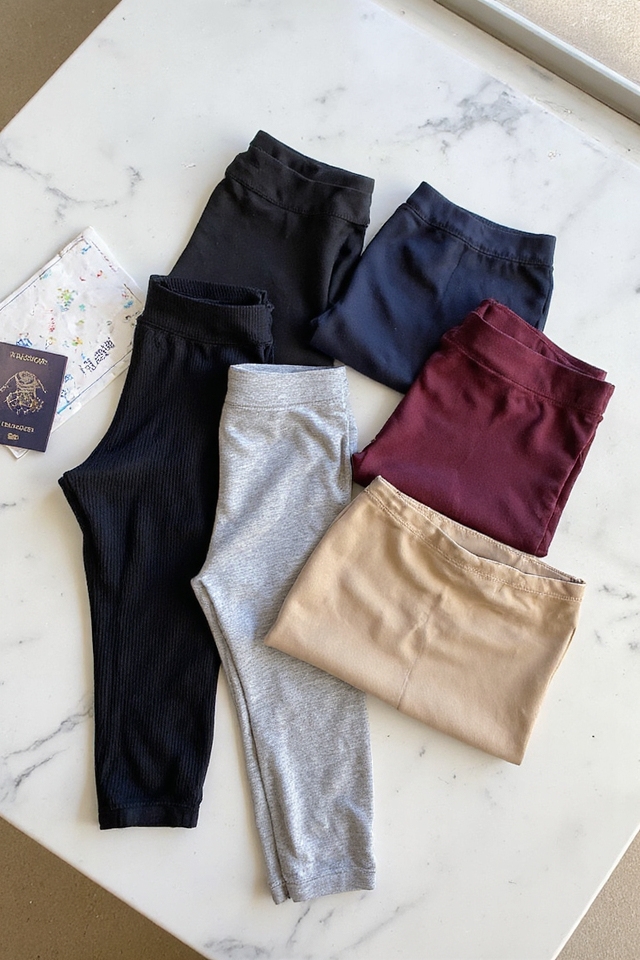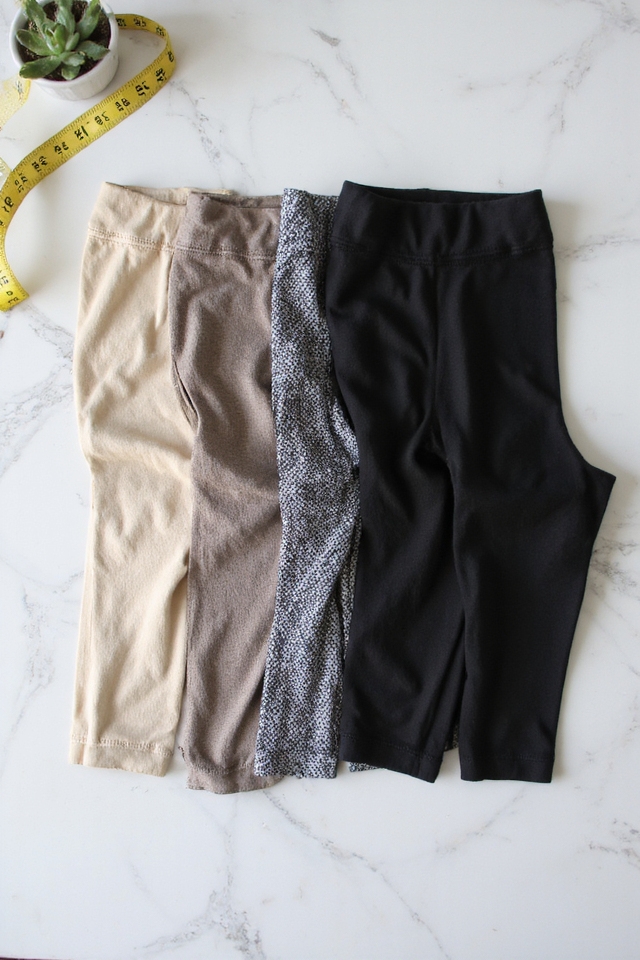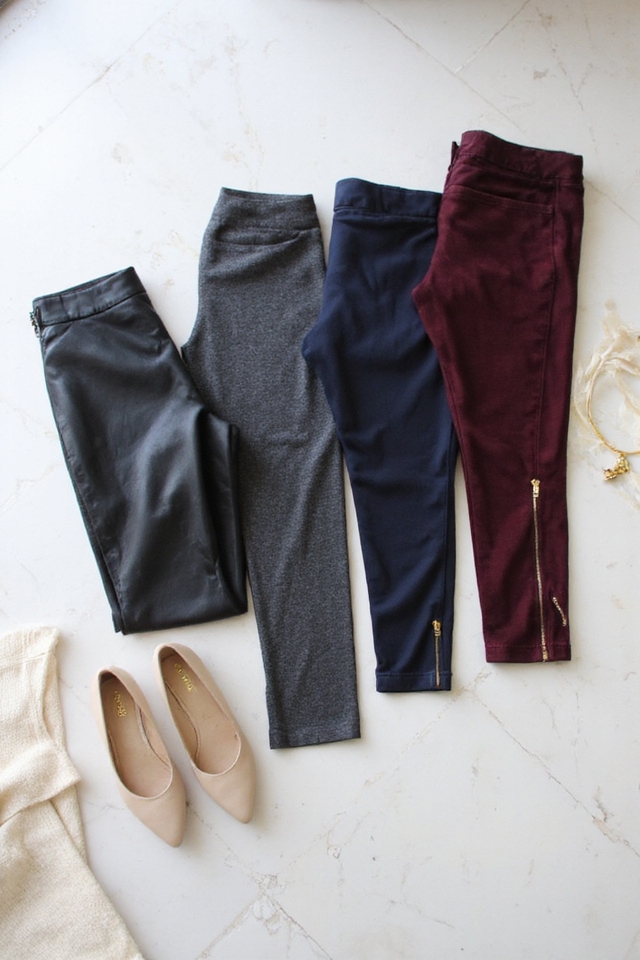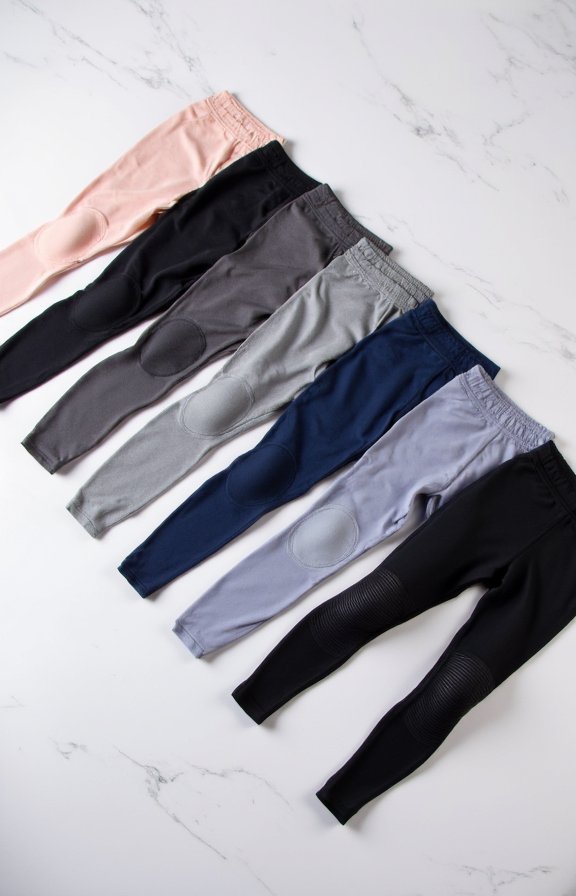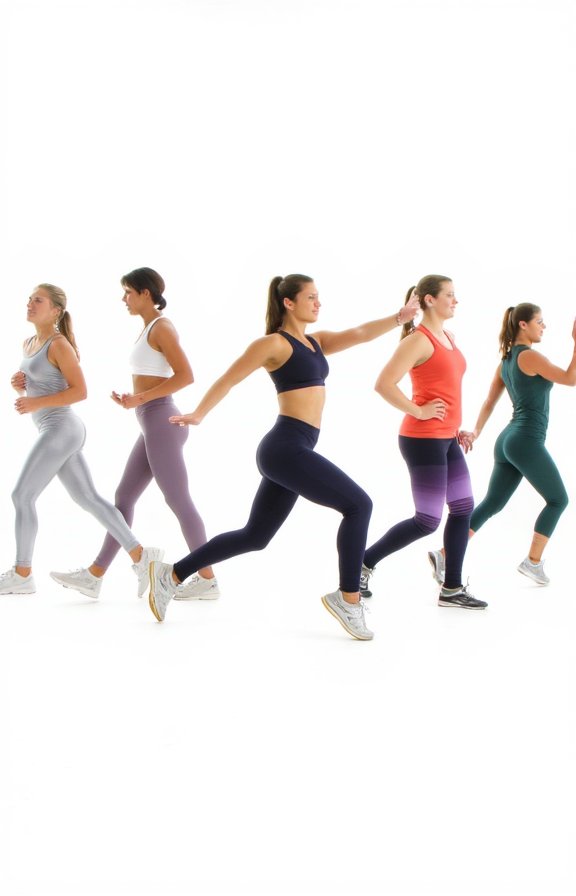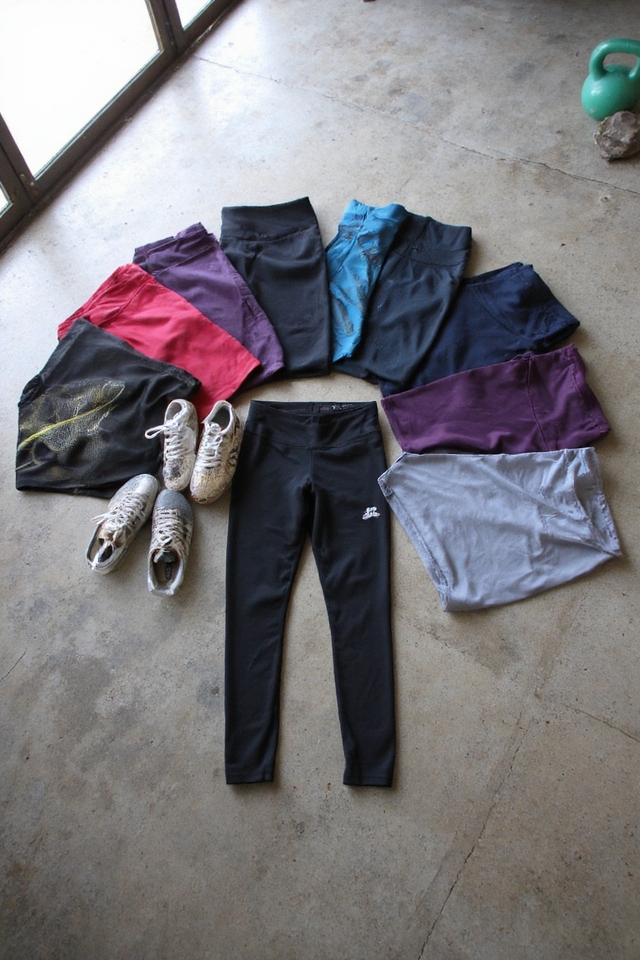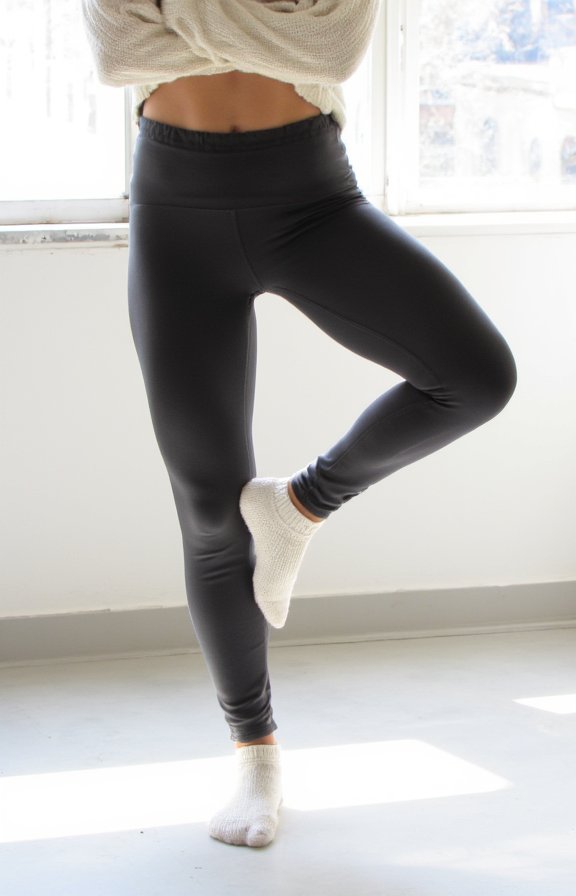You’ve got six smart compression legging styles that’ll keep your legs healthy and happy at 30,000 feet. Graduated compression leggings deliver maximum circulation support with their ankle-to-thigh pressure design, while high-rise options provide core stability without waistband digging. Moderate compression styles balance comfort with protection, firm compression leggings offer medical-grade support for high-risk travelers, and capri lengths keep you cool in warm destinations. Reflective compression leggings guarantee visibility during early morning airport runs. Each style offers unique benefits for your travel needs.
Graduated Compression Leggings for Maximum Circulation Support
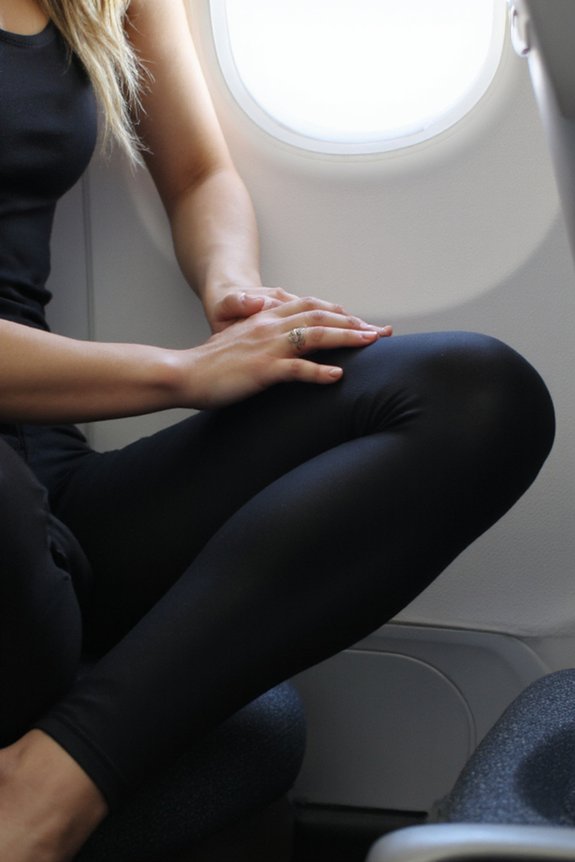
Your legs work overtime during flights, pumping blood back to your heart against gravity while you’re stuck in that cramped seat.
Graduated compression leggings deliver targeted pressure that’s tightest at your ankles and gradually decreases toward your thighs. You’ll feel the firm, supportive squeeze working its magic, boosting circulation and reducing swelling.
Choose medical-grade options with 15-20 mmHg compression for ideal travel protection.
High-Rise Compression Leggings for All-Day Travel Comfort
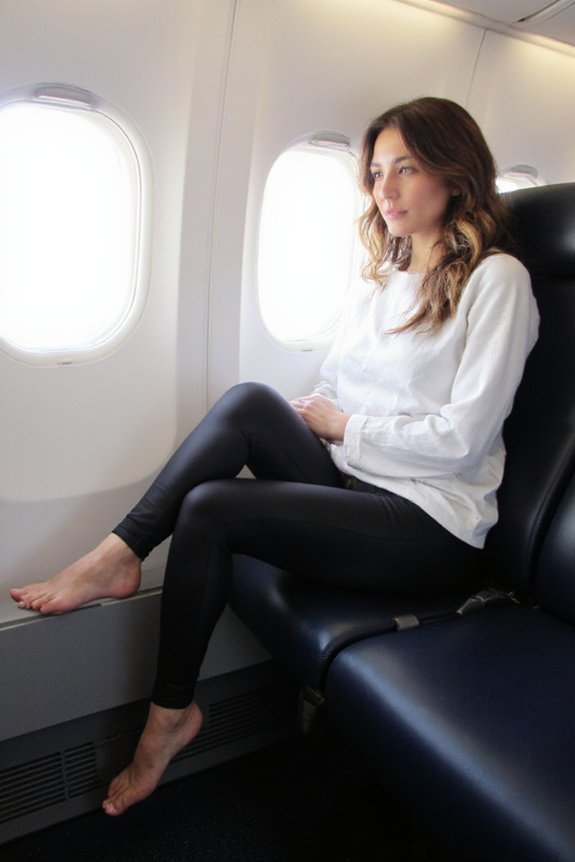
When you’re traversing airports and enduring long flights, high-rise compression leggings become your secret weapon for staying comfortable and put-together.
They’ll support your core, eliminate waistband digging, and stay perfectly in place through security checks. The higher waistband offers gentle abdominal compression that reduces bloating while creating a sleek silhouette under travel tunics.
You’ll appreciate the extra coverage during those awkward overhead bin reaches.
Moderate Compression Leggings for Balanced Flight Support
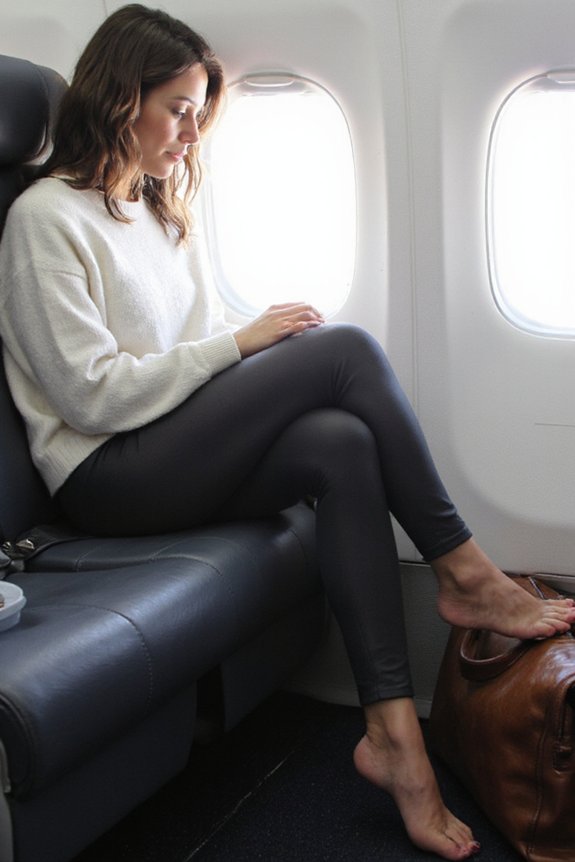
If you’re seeking the sweet spot between comfort and compression, moderate compression leggings deliver exactly what frequent flyers need.
These 15-20 mmHg styles offer reliable circulation support without that squeezed-sausage feeling. You’ll appreciate their versatility—they shift seamlessly from red-eye flights to hotel gym sessions.
Look for moisture-wicking fabrics with four-way stretch. They’re your perfect travel companion when you can’t decide between performance and everyday comfort.
Firm Compression Leggings for High-Risk Travelers
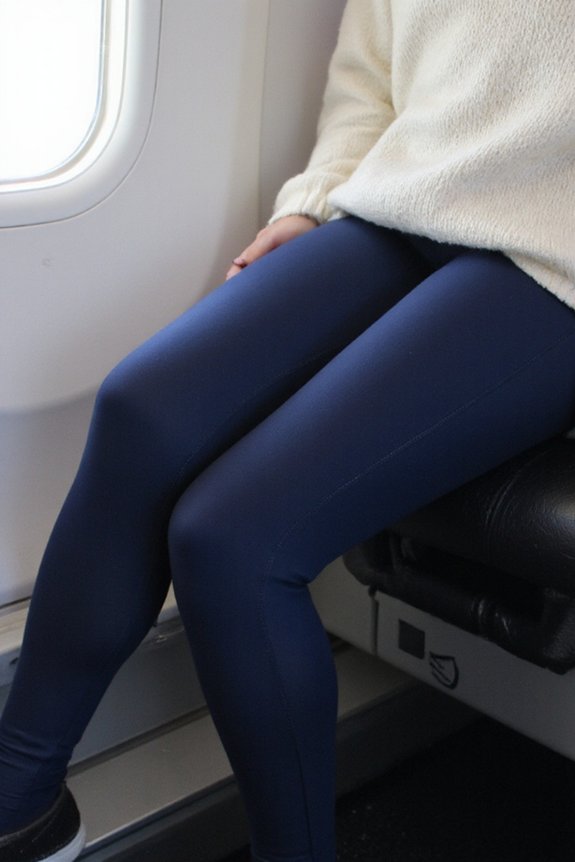
While firm compression leggings might feel restrictive at first, they’re essential gear for travelers with serious circulation concerns or those prone to swelling.
You’ll want 20-30 mmHg compression levels that provide maximum support during long-haul flights.
Choose moisture-wicking fabrics with reinforced panels at the calves and ankles.
Pair them with loose tunics or oversized sweaters to balance the snug fit below.
Capri Compression Leggings for Warm-Weather Flying
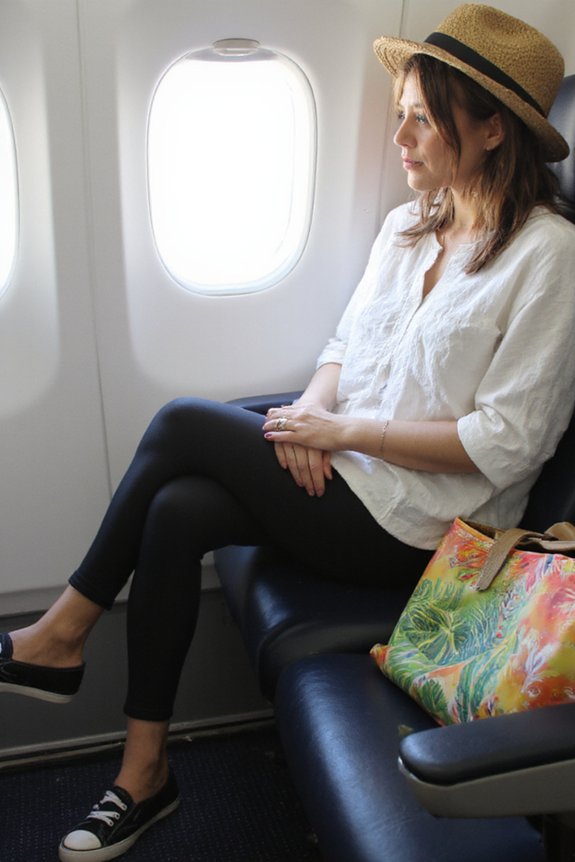
Flying to tropical destinations or during summer months calls for compression options that won’t leave you overheated.
Capri-length compression leggings hit that sweet spot—they’ll protect your calves where DVT risk is highest while keeping you cooler than full-length styles.
Look for moisture-wicking fabrics with graduated compression from ankle to knee.
Pair them with breathable tunics, linen shirts, or flowy travel dresses for comfortable, stylish protection.
Reflective Compression Leggings for Early Morning and Late Night Travel
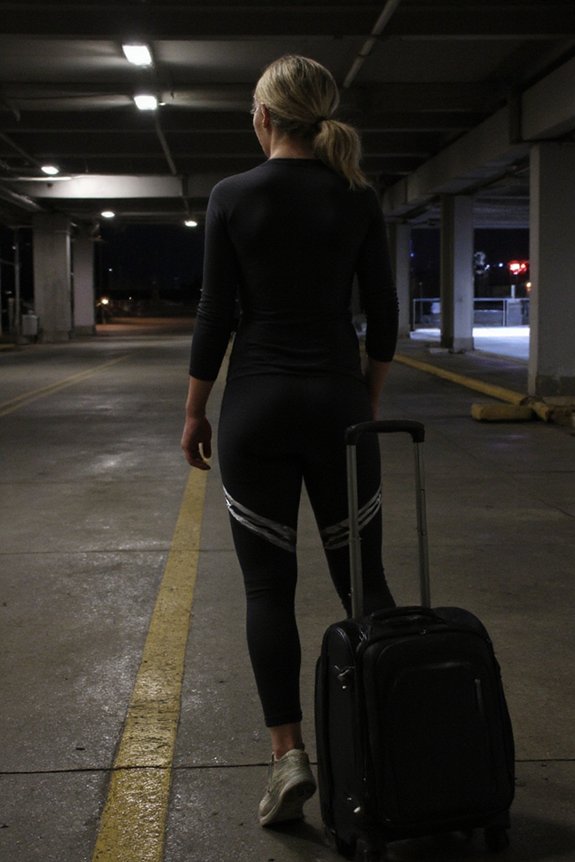
Those pre-dawn airport runs and red-eye arrivals just got safer with reflective compression leggings in your travel wardrobe.
You’ll appreciate the visibility strips when maneuvering through dark parking lots or catching rideshares. The reflective details won’t compromise your sleek airport style—they’re strategically placed along side seams and calf panels.
Plus, you’re getting the same circulation benefits while staying visible during those off-hour travel times.
Frequently Asked Questions
How Many Hours Before Flying Should I Put on Compression Leggings?
You’ll want to slip on your compression leggings about 30 minutes before boarding.
This gives your body time to adjust to the gentle pressure while you’re still moving around the airport.
Don’t wait until you’re seated – that defeats the purpose!
Put them on at home or in an airport restroom.
The compression works best when you’re wearing them before sitting for extended periods, maximizing circulation benefits throughout your flight.
Can I Wear Compression Leggings Through Airport Security Scanners?
You’ll breeze through airport security wearing compression leggings without any issues.
They’re made from synthetic fabrics that won’t trigger metal detectors or cause problems with body scanners. You don’t need to remove them like belts or shoes.
The compression material actually makes security checks smoother since there aren’t any pockets, zippers, or metal details to worry about.
Just walk through confidently – security agents see compression wear daily on travelers.
Should Compression Leggings Be Worn on Flights Under 3 Hours?
You don’t need compression leggings for flights under three hours unless you have specific health concerns.
For short trips, your regular leggings work perfectly fine.
However, if you’re prone to swelling or have circulation issues, go ahead and wear them. They won’t hurt, and the extra support feels great.
Just make sure they’re not too tight around your waist – you’ll want to stay comfortable while seated.
How Do I Wash and Care for Compression Leggings Properly?
You’ll want to wash your compression leggings in cold water on a gentle cycle, and skip the fabric softener – it breaks down the elasticity.
Turn them inside out first to protect the fabric’s surface. Never wring them out; instead, gently squeeze excess water and lay flat to dry.
Heat’s your enemy here, so avoid the dryer completely. Hand washing works best, but machine washing’s fine if you’re careful with settings.
Are Compression Leggings Safe for Pregnant Women During Air Travel?
You’ll need your doctor’s approval before wearing compression leggings while pregnant, especially for flying.
Most maternity compression styles feature gentle support panels that won’t restrict your bump.
Look for graduated compression between 15-20 mmHg – that’s the sweet spot for pregnancy travel.
Skip anything too tight around your waist. Instead, choose styles with adjustable waistbands that sit comfortably below your belly.
Always prioritize comfort over compression strength during pregnancy.
